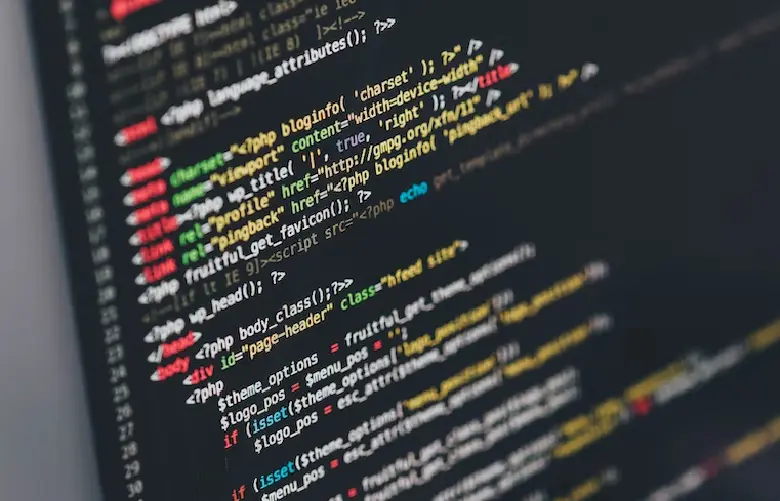Have you ever wondered how things are connected between the device and the various software you use? Well, it’s entirely because of the operating system that you can make the most of your device, whether a computer or a mobile phone. Irrespective of your interest, whether you are a curious learner or a tech enthusiast, developing a detailed understanding of operating systems is essential. This article will start from the basics, such as what operating systems are, and discuss their characteristics, functions, advantages and disadvantages. Are you excited? Let’s dive in!
What Is an Operating System?
While talking about operating systems, the first question that comes to mind is what operating systems are. Commonly referred to as OS, Operating System is a software program that controls the hardware of a computer and serves as a platform for operating various applications. In the simplest terms, the operating system is the essential software that makes the computer run smoothly. If you intend to learn more, you can opt for a DevOps & Cloud Engineering certificate course.


POSTGRADUATE PROGRAM IN
Multi Cloud Architecture & DevOps
Master cloud architecture, DevOps practices, and automation to build scalable, resilient systems.
Why Use an Operating System?
After knowing an operating system, one must know why one must use it. Using an operating system proves beneficial for the smooth functioning of any modern device, be it a cell phone or a computer. Some of the key reasons supporting the functions of operating systems are mentioned below:
-
Resource Management:
This is one of the primary functions of the operating system. It controls and manages the computer’s hardware resources, including CPU, storage and memory, and assigns them to various applications as per the requirement.
-
Ensures Compatibility of the Application:
Operating systems offer a suitable environment for smooth and successful running. Without it, every program would be required to handle hardware resources on its own, making the overall process more complicated.
-
Offers Security:
Operating systems have various security features that offer quality protection against malware and access from unauthorised sites and viruses. It comes with a firewall, user account controls and antivirus software that ensures the access of only authorised users.
-
Useful Support and Upgrade:
Operating systems offer a regular upgrade for fixing bugs, improving performance and adding new features. Technical support is also available to assist users facing any issues with the system.
An Introduction to Cloud Computing Deployment Models can benefit you if you are ambitious about the process.
What are the Functions of an Operating System?
Functions of Operating system: Operating system has the following major functions:
-
UI
The operating system comes with User Interface, which can either be Graphical User Interface, commonly referred to as GUI or Command Line Interface, referred to as CLI.
UI makes the user’s interaction smooth and hassle-free and accesses it’s program quickly.
-
Process Management
Operating systems also manage multiple ongoing programs, commonly known as processes, and ensure that they are assigned the appropriate resources for the proper execution of their tasks.
-
Security
Operating systems come with many security features that protect the system from numerous cyber threats and keep it safe for the user.
-
Application Management
One of the most critical functions of operating systems is the management of applications. This controls and manages the execution of the applications included in the device’s software.
-
Networking
Operating systems also come with networking capabilities that make it possible for the computer to connect with other devices for the sharing of resources and data successfully.
-
Memory Management
The system’s memory resources are also managed by operating systems by allocating and deallocating memory space to various processes as per the requirement. It also assures that each process gets access to the particular memory space bound for it.
-
File Management
The system of files is also managed by operating systems. This involves the organisation of the directories and files, making it easy for users to modify and access them safely.
-
Device Management
Another essential function of operating systems is device management. It manages various output/input devices like disk drives, printers, and keyboards, among many more. The operating system ensures that all these devices are appropriately used by the programs it requires to function.
What Are the Various Types of Operating Systems?
Let’s look at the various types of operating System explained below.
-
General-Purpose Operating System
This operating system is designed to deliver the requirement of a wide range of users and applications. The general-purpose operating system is typically used in desktops, servers, and laptops. Some examples of this operating system are Mac OS, Windows and Linux.
-
Mobile Operating System
This operating system is designed for cell phones and tablets. This system typically has features like efficient b battery management and touchscreen support.
-
Embedded Operating System
This operating system is exceptionally designed to run on embedded systems like vending machines, the control system of various industries and cars.
-
Network Operating System
This operating system is primarily concerned with controlling and managing network resources like file servers or printers.
-
Real-time Operating System
This operating system is designed to respond to real-time requests or events that entertain its use, typically in control or embedded systems.
Here are the 3 Major Types of Cloud Service Models – Characteristics and Benefits Explained.

82.9%
of professionals don't believe their degree can help them get ahead at work.
Characteristics of Operating Systems
Although the characteristics of operating systems depend on the design and its type, here are some general characteristics that operating systems entertain:
- Operating system manages efficient management of the computer’s software and hardware resources.
- Operating system allow access to multiple processes and applications at the same time.
- Operating system comes with security features to protect against malware, unauthorised access and viruses.
- Operating system comes with a user interface that makes it easy for users to interact with the device and applications without hassle.
- Operating system ensures the proper management of files and folders.
- Operating system comes with the ability to handle errors that helps users to diagnose them efficiently and fix them.
- Offers upgrades that help users to access new features and new versions.

Look here for the Difference Between Public Cloud and Private Cloud.
Advantages of Operating Systems
It is no doubt that operating systems offer many benefits, which is quite evident with the operating system characteristics mentioned above. Look below to learn about the advantages of the operating system:
- Offers a user-friendly interface
- Provides a source for computing
- Proves beneficial in sharing resources
- Offers protection of data
- Doesn’t require the users to know to code
- Makes multitasking possible
- Offers frequent updates and new features
Disadvantages of Operating System
As there are various advantages of the operating system, there are also some disadvantages that need necessary mention. The operating system’s disadvantages are mentioned below:
- With the central operating system failing to respond, the entire system collapses.
- Some operating systems might be more expensive than open-source platforms like Linux.
- The development of operating systems is quite complicated, and the language used in the creation process is not easy to define.
- The threats of operating systems are worse as they are more prone to viral attacks.
You can also learn about the Advantages and Disadvantages of Cloud Computing.
Examples Of Operating System With Market Share
After gaining all the basic information about operating systems, you must be eager to know the examples. Below are the operating system examples, along with their market share.
| Name Of Operating System | Market Share |
| Windows | 40.34 |
| Andriod | 37.95 |
| IOS | 15.44 |
| Mac OS | 4.34 |
| Linux | 0.95 |
| Chrome OS | 0.14 |
| Windows Phone OS | 0.06 |
Conclusion:
However, operating systems are constantly evolving, and with the advancement of technology, they will become more complex in the future. Learning and developing strategies to understand the concepts would become essential. The best way would be to opt for a course. Various online platforms might be beneficial for your education on operating systems.
How does an operating system manage hardware resources such as memory and CPU?
How do I update my operating system, and why is it important?
- Inspect for any option that asks you to update your operating system. They can generally be seen in your control panel. You can also search online to view the latest updates.
- The second step is to download and install the updates.
- Once the updates are successfully installed inside your computer, your computer might require a restart.
Can I customise my operating system, and if so, how?
What is the role of the kernel in an operating system?
How does an operating system interact with applications and software?
Updated on January 29, 2025
